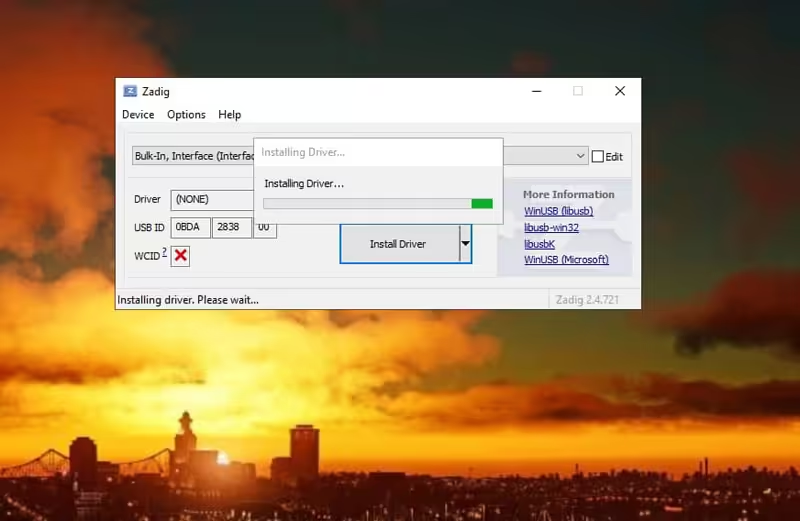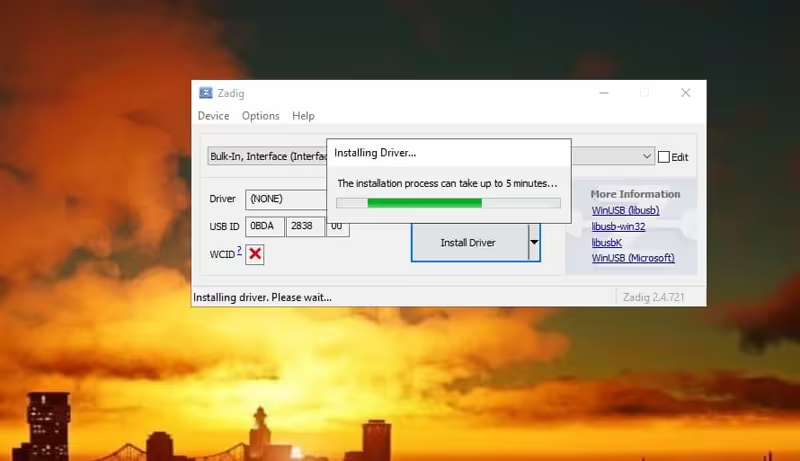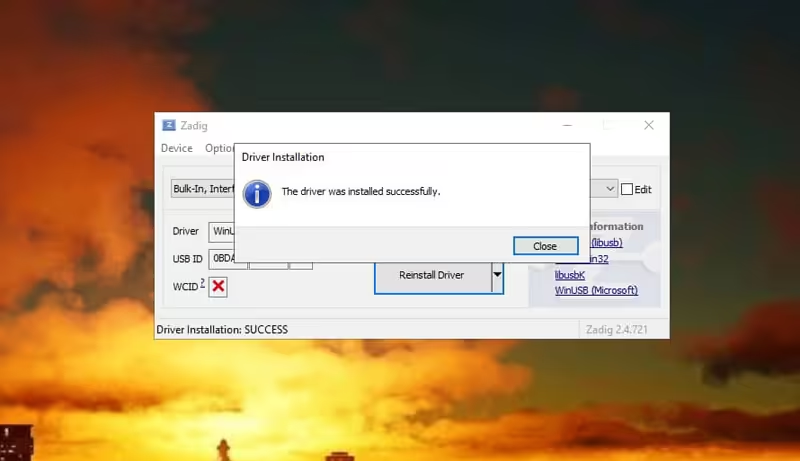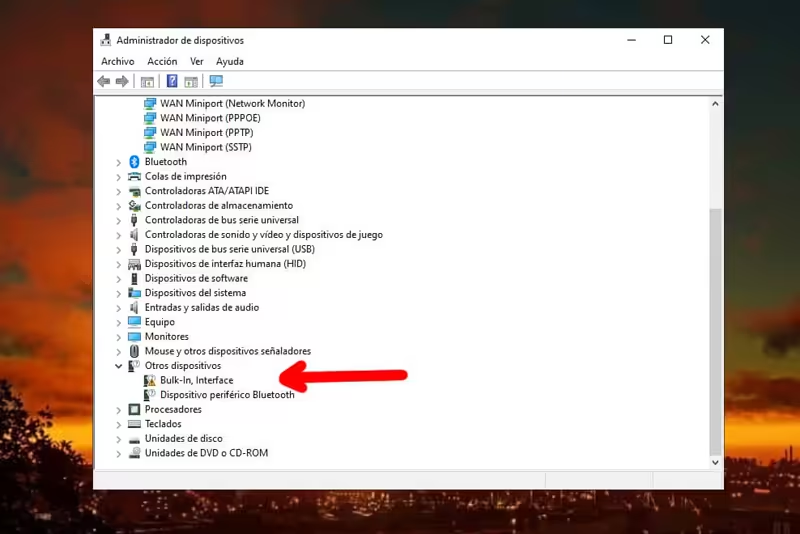Finally, make sure that the USB ID shows "0BDA 2838 00" and click on"Install Driver".
Click only once. Even if it seems to have no effect, wait. It takes a few seconds for the installation to start.


After a few minutes (depending on your machine) it will be installed.

Now, in the device manager you will see that instead of two "Bulk-In, Interface" only one will appear, indicating that the new driver has been installed.

Depending on the equipment, you may not find it there and it may appear under the name "Blog V4" in Universal Serial Bus (USB) devices, as long as the dongle is connected to the computer.

Open software and play
You can now open the program by running SDRSharp.exe
In the hamburger menu of SDR Sharp, under Source choose RTL-SDR USB (this is usually the same for all programs)

Then you just need to press Play to start receiving signals, after which you can adjust the gain and set the program to your liking.
Here you have a little bit of listening on 40 meters, 10 meters CB and other bands with the first tests of the MLA 30 loop antenna (to which I will dedicate a review in a future post).
Although it was not a very good propagation day and my conditions, location and antenna height are not the best, I was quite surprised to hear some stations on 11 meters (27.555 USB is still a chicken coop) and even some on CB.
Choosing software for RTL-SDR
Here the choice is a personal matter. There are quite a few programs compatible with this SDR. Some are more complete, but some are also more cumbersome. Almost all of them are very similar in their usage. Here is a list of the ones you can try.
I have compared for a while SDR# (SDRSharp) (originally created by Airspy only for their devices with SDR (multiplatform and open source software ). Maybe they are the two most used to start with, and I'm going to try to explain why I'm going with SDR.
In both programs, to move through the frequencies you can move up and down with the mouse by clicking on the top and bottom of any number or with the right and left cursor keys. You can also scroll to any point by clicking in the spectrum analyser.


On the left SDR# (SDRSharp), on the right SDR .
Both programs share many similarities in their tools and options and have good documentation and user guides as well as numerous reviews on Youtube, forums and blogs. In both you can tag frequencies to have a quick access list, record, play with the filters, adjust the bandwidth with the mouse, etc.
I leave both guides here. Although they are several years old, they haven't changed structurally in terms of usage.
Manual de SDR# y SDRSharp
Here is the SDR# (SDRSharp) one.
And the SDR one translated from English to Spanish thanks to DeepL. The translation is acceptable except for some single words like "Ham" translated with "jamón", when the correct is ham radio= ham radio amateur.
SDRSharp stands out for its more polished and graphically nicer interface and because it has a few interesting plugins (although they are scattered and many of them have not been updated for a long time), however SDR behaved much better. Here are the conclusions from my experience of using it:
In favour of SDR
- Much more stable, SDRSharp crashes quite a bit on Win10 causing intermittent crashing.
- Lighter and more optimised. The spectrum analyser consumes less resources.
- Its interface is simpler and easier to use.
- Its recorder works better by default. In SDRSharp I couldn't get it to work.
- More updated, its creator is commenting on improvements and changes on Twitter.
- It can be used on Windows, Linux, MacOS and BSD and since 2022 has a version for Android.
Previous related article: RTL-SDR Blog V4, listening again
Next post: MLA 30 antenna loop review.
If you want to receive the next posts in your inbox, you can sign up here.






